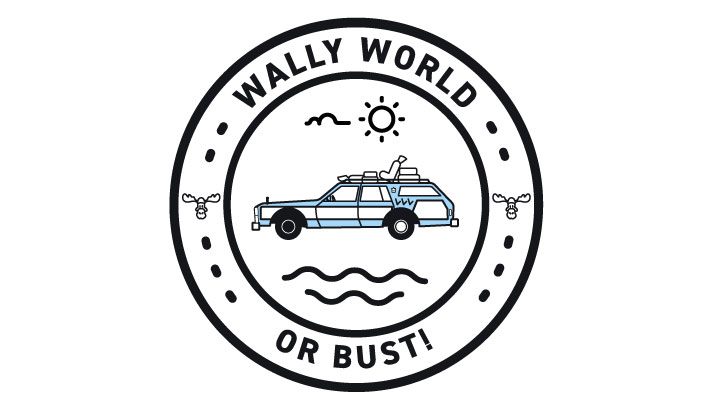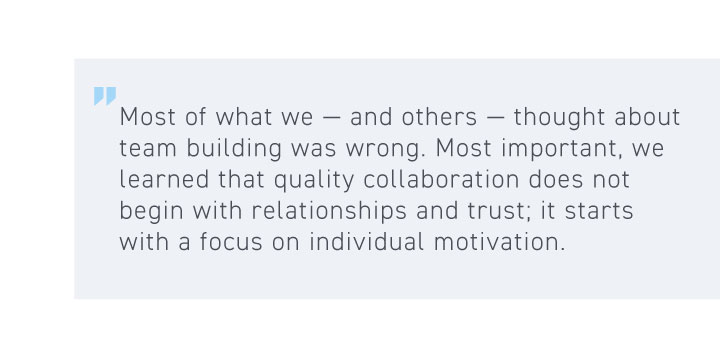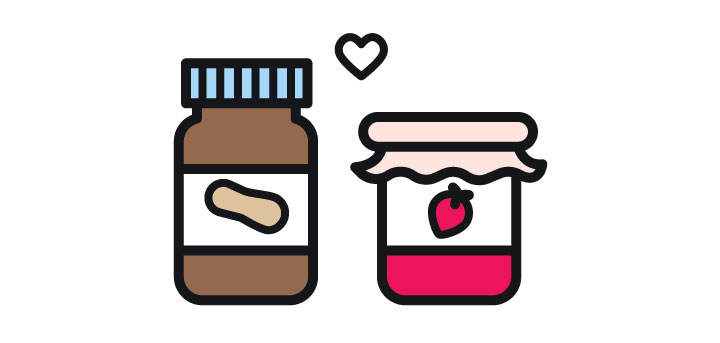When you mention “team building” to your colleagues, you’re likely met with groans and sighs. That’s because most team building feels like the forced fun your parents made you participate in when you were a teenager, like letting your little sister tag along somewhere or being stuck in a car on a family vacation.
It doesn’t have to be this way.
Modern team building can warm up an office environment fast. It can inspire even the most disengaged worker to give their best effort. If you hate team building, keep reading to learn a better way to inspire, lead, and keep your team warm this winter.
When Team Building Goes Wrong

Entire comedy sitcoms have been created around the idea of forced fun and team building. First there was Clark Griswold and his family in the Wagon Queen Family Truckster. The Office made us laugh at countless ridiculous team-building exercises. What about Alec Baldwin and Tina Fey’s antics at the Six Sigmas retreat on 30 Rock?
The best comedy makes fun of the ridiculousness found in real-life situations. Unfortunately, these comedic antics are too close to some of our corporate efforts to make employees successfully bond with each other.
Here are some really bad ideas for team-building activities:
- Remember the trust fall exercises from more than a decade ago? If you didn’t experience these, consider yourself lucky.
- How about paintball? Who decided that dressing up in survivalist gear and running around in a cornfield to shoot your coworker in the face would somehow bond you together?
- Some ropes courses force staff to climb, dangle, and fly through the air. Adventure Associates says this can, “enable participants to expand their comfort zones—sometimes dramatically—and recognize fears that may block personal achievement.” Can you say “worker’s comp claim”?
In 2017, Entrepreneur broke some bad news to corporate leaders with an article called, “There’s No Easy Way to Say This, But…Your Employees Hate Your Team-Building Ideas.”
The word was out. A Psychological Science journal article followed, showing how forced team-building exercises can backfire. They found worst-case scenarios could lead to:
- Segregation of employees
- Erosion of trust
- Bias that excludes other employees
- Negative attitudes
While bad team-building events and the blowback they cause are hilarious when played out in The Office, they’re not funny in real life. Demotivated teams are unproductive teams.
The problem with forced-fun team building is that it fails to address the root issues holding back your teams.
Liz Ryan says the entire multimillion-dollar team-building industry was built around the fallacy that “if only your team members spent more time doing silly things and solving group problems together, climbing trees and rolling around on the floor, they would work more effectively together the rest of the time.”
If what we’ve been taught about team building is wrong, what can corporate leaders do to help teams grow, communicate, and become more cohesive?
Team Building and the Search for Authenticity
Authentic team building does not start in the woods on a ropes course or even in a corporate seminar.
Liz Ryan suggests teams that lack cohesion also lack authenticity—and this problem usually stems from management or a toxic work environment and not necessarily the teams themselves. She suggests team building simply will not bond workers together if the department has:
- Unclear or missing strategic direction
- Unaddressed conflict
- Role confusion
- Bureaucracy
- Slow processes
- Over reliance on metrics
- Little or no conversation about cultural norms
- Inexperienced leadership
- Lack of innovation and experimentation
- Lack of praise and acknowledgment
“If you have to take your team off-site to play games because you can’t stand to talk about what’s really happening in your office, what does that say about you as a leader?” she asks. Teams need to solve their internal problems first and then work on becoming closer to their coworkers. Or perhaps the best team building can do both simultaneously.
Carlos Valdes-Dapena implores leaders in Harvard Business Review to “Stop Wasting Money on Team Building.” He and his research colleagues studied teams and determined:

Real leaders recognize that a team is only as good as the individual members within it. Focusing on the individual players within the team, including by building soft skills like communication and patience, can strengthen the team. What if team building could take a form other than the traditional forced-fun approaches we’ve been groaning about and instead create authentic ways for teams to address real problems and come up with solutions?
Benefits of Authentic Team Building
Workology recently published their take on modern team-building exercises and how they can grow the organization. They suggested the right kind of team building motivates and inspires. For example, your team can:
- Establish a departmental charter with a weekly roadmap of tasks the team can review together. This will create a more cohesive framework for individual efforts and build a culture of accountability and ownership.
- Learn to work together in group activities. While lame team-building exercises may not work, managers can take teams to lunch or give them fun tasks that create opportunities for closer interaction to give them a sense of “we’re in this together.” For example, employees can organize a birthday potluck or rotate a team to keep the kitchen and break areas clean.
- Create events that develop group communication skills. For example, give the team the task of brainstorming a new marketing strategy or coming up with ways to solve other company problems. Lunch-and-learns are another way for employees to share expertise with others while improving their presentation and communication skills.
- Build community by finding out what’s important to your workers and then give them opportunities to work together for the greater good. During the holidays, there may be a group that wants to work at a shelter or collect donations. Maybe the team would like to donate blood or volunteer with Habitat for Humanity.
The difference between these types of activities and forced-fun team building is that the employer makes an honest effort to build cohesion by motivating employees with what is important to them. Creating opportunities to improve communication and motivation means employees will naturally create friendships at work, which improve morale and productivity.
Tips for Team Building that Really Builds Teams

Do you know who has mastered the art of team building? Firefighters. Cornell University studied more than 400 fire stations and found that the one thing that brings teams together is the tradition of the firehouse communal meal. Firemen and firewomen shop, take turns cooking, and then eat together and coordinate cleanup.
CIO magazine agrees that prepping and eating meals can bring people together. They interviewed a marketing executive in LA who said the most effective team-building exercise she ever participated in was a challenge to bring in the best peanut butter and jelly sandwich you can make. Good-natured banter about the importance of PB&J, a shared tasting, and reminiscing about the comfort food all made for a fun, creative way to bond people together without ever using the term “team building.”
This kind of organic, authentic team building is exactly what the majority of your employees will appreciate. Another suggestion comes from a Forbes article by contributor Dana Brown lee. She helps corporate teams improve communication by conducting the 4 Walls Communication Activity. The simple 15-minute exercise is designed to help people figure out their preferred communication mode and can be used at the beginning of a meeting. The steps include:
- Brainstorming all the ways the team can communicate with each other (email, phone, face-to-face, instant messaging, etc.)
- Putting a sticky note with each type of communication on the walls
- Asking the team to walk to the wall that shows their favorite method of communication
- Asking the wall groups questions to find out why they prefer that method of communication, what their pet peeves are, and so on
It’s a simple exercise but you might be shocked at how many workers recognize that they’re a source of frustration by communicating in the “wrong” ways with their coworkers. Everyone is wired differently, so filling in these communication gaps can improve the cohesiveness of and lower frustration levels in your department. It’s a team-building exercise that will help improve the daily working relationships of your employees.
Artisan Talent’s Favorite Ways to Build Teams
“Strong relationships and trust do matter to collaboration, but they are not the starting point. They are the outcomes of dedicated people striving together. Connecting collaboration to the motives of success-minded team members is what unlocks productive teamwork.”
–Carlos Valdes-Dapena, “Stop Wasting Money on Team Building,” Harvard Business Review
Here’s what have we learned about team building so far:
- If it’s forced fun, it won’t work
- Team building must focus on individual motivation as well as group cohesion
- If the team or company has issues, they’ll still be there after the team building is over
- Choose activities that the employees want to do
- Choose activities that incorporate learning real skills that can be applied to the job
CIO magazine points out that effective teams start with effective leaders. They found the characteristics of effective teams include an understanding of their organization’s mission and their place in achieving it. The best team building reinforces not only why we’re here but also how we’re in this together.
When you’re trying to warm up your office environment with team building, the key takeaway for managers may be a simple idea that’s hard to execute:
You cannot make your employees want to be productive, but you can create an environment in which they want to excel.
That’s the nugget behind successful team building. Don’t use recreational activities as a replacement for real team building. Don’t put your team at risk with dangerous activities. Instead, work with your team to establish goals and tasks and encourage them along the way. Some fun ideas that your teams may get behind include:
- Setting up a “make your own movie” cam during a longer catered lunch. Let coworkers choose their teams and ask them to divide tasks (scriptwriter, actors, camera operator, director, and so on). Give them a business problem to solve or a funny topic to create a movie around. After the event, have a committee (includes one member of each team) judge the movies. Then bring everyone back together for movie night (yes, this can be during the day) with popcorn and prizes.
- Having teams play “back of the napkin.” Urban legend has it that the best entrepreneurial ideas are jotted on the back of a cocktail napkin. Build a team or teams and have them list out some of the toughest on-the-job problems they’re grappling with this week. Give each team a folded napkin and pen and ask them to draw a solution to the problem as a graph, sketch, or flow chart. Review the napkins and award prizes for the best one.
![three simple but effective tips for inspiring staff and building teams.]](https://creative.artisantalent.com/hubfs/Team_Building5.jpg)
Bejan Douraghy, CEO of Artisan Talent, shares these three simple, but effective tips for inspiring staff and building teams:
- Play “Pick Three”: When staff get busy during the holiday season, Bejan encourages them to pick three of the most pressing tasks for the day and forget about the rest. This helps staff stay focused even when there might be a little holiday distraction.
- Provide a Lunch: One of our favorite team builders at Artisan Talent is catered lunch. It’s an especially nice treat during the busy season that could include a big push for a client or it could offer some relief during the stress of the holidays.
- Celebrate Big and Small Wins: Team building can happen even when the victories are small. Artisan likes to celebrate all the wins and it’s a great way to keep people positive and bonded together as a team.
If your team is struggling, maybe it’s time for some fresh talent. Artisan Talent helps build effective, award-winning teams. Contact us.




